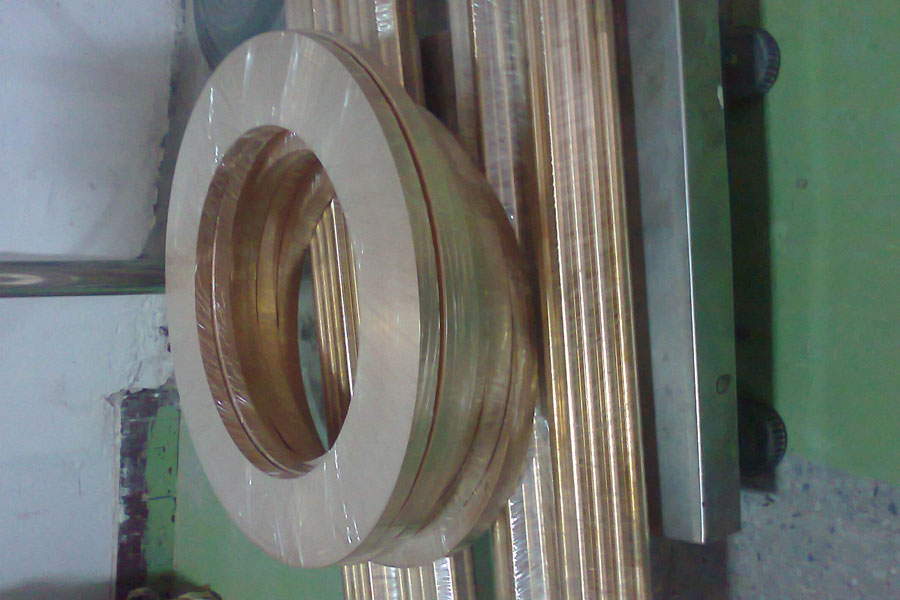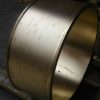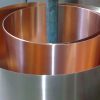
Common heat treatment methods for copper alloys are homogeneous annealing, stress-free annealing, recrystallization annealing, solution treatment and aging treatment. To prevent oxidation during processing, save pickling cost and get bright surface, you can anneal copper alloy strips, wires, coil tubes in protective atmosphere or in vacuum furnace, that is, bright anneal.
Large amounts of O2, CO2, and H2O in the air oxidize the surface of copper alloys. Copper alloys must be pickled before further processing. Heating in a protective atmosphere reduces the oxygen content in the furnace and greatly improves the surface quality of annealed copper alloys. Bright annealing process does not require pickling equipment, no environmental pollution, no harm to human health, reduce metal loss, save cost, greatly extend the service life of copper alloy strips, wires, coils Prolong.
Protective Gas
Common protective gases are O₂, CO₂, CO, H₂, H₂O and N₂. Among them, N2 can be regarded as an inert gas at the heat treatment temperature and does not participate in chemical reactions, but O2, CO2 and H2O are oxidizing gases and CO and H2 are reducing gases. The main components of the surface oxidation of copper in the reaction are O4 and H2O. Oxygen reacts with copper and zinc to form metal oxides. The equation is XNUMXCu +O₂====XNUMXCu₂O.
A very small amount of oxygen in the protective atmosphere is sufficient to oxidize copper and zinc. For bright treatment of copper alloys, the oxygen content in the furnace should be less than 1ppm. Otherwise, the alloy surface will oxidize. Steaming can oxidize copper alloys when heated, including zinc, aluminum, lead, tin, beryllium, etc., so oxidation becomes more apparent at lower temperatures. Therefore, it is necessary to keep the atmosphere in the furnace below -60°C.
The main protective atmospheres used for heat treatment of copper alloys are as follows. High purity nitrogen, purification of exothermic atmosphere, nitrogen, ammonia decomposition gas. Pure hydrogen etc. Among them, high-purity nitrogen itself has no reducing ability, and reducing atmosphere of refining exothermic atmosphere and nitrogen atmosphere have less CO and H2 and lower reduction potential, so they are not suitable for bright treatment. Currently, the protective atmosphere is mainly ammonia decomposition gas and pure H2. 75% of the ammonia decomposition gas is H2 and the remaining 25% is N2. This is because H2 has better reduction and better heat transfer performance than nitrogen. Fast temperature consistency and rapid cooling also increase productivity accordingly. Due to the change of heat transfer effect, the temperature difference of charge becomes small and the adhesion phenomenon decreases. The very low density of hydrogen can significantly reduce the energy consumption per unit and the resistance of the hot air circulation, reduce the noise of the powerful circulation motor of the furnace platform and keep it below 85dBA.
Lubricant
Lubricants also play an important role in achieving a good bright annealing effect. The XNUMX first requires complete evaporation without removing oxygen from the spotless heating process. Otherwise, oxygen will react with hydrogen in the protective gas to form vapor, reducing the reduction potential. Secondly, mineral oils and emulsions are used as lubricants in the cold rolling of copper strips. The feature of emulsion is that it has an excellent cooling effect, can obtain a large amount of trace pressure, enables high speed rolling, and improves productivity, but since emulsion has defects of impurities and is easily eroded, Emulsion rolling strips need to anneal in a short time. Otherwise, it will corrode. At present, low viscosity mineral oil is known as the main lubricant because of its low impurities and high volatility after heating, but it can achieve a good bright annealing effect.
Bright Annealing Equipment
The bright annealing equipment for copper alloy strips, wires and coils is mainly a bell-type annealing furnace. This process not only obtains a smooth surface and proper mechanical properties, but also has no adhesive phenomenon, so it has higher requirements on the performance and structure of the annealing equipment.
▶ Good furnace temperature uniformity
The annealing equipment must have very good furnace temperature uniformity so that the annealing temperature of the copper alloy can be accurately controlled. The hooded annealing furnace has a powerful convection circulation system, effective recirculation fan, large air volume, high air pressure, high speed wind speed, excellent heat exchange effect, the temperature uniformity in the furnace is less than ±5℃ , The charge of all furnaces can be uniform. Mechanical value and process value. At the same time, the annealing time is shortened and productivity is improved.
▶ Good sealing
The workload space is an all-metal enclosure. With the help of a water-cooled rubber seal between the hearth flange and the inner cover flange, the circulating fan unit realizes a complete vacuum seal space. There is no mechanical seal on the fan shaft and there is no possibility of leakage. Therefore, the dew point of the protective atmosphere can be kept at -60°C during the entire annealing process, and bright annealed copper alloy is possible.
First, a vacuum is pumped and nitrogen is purged to make the workspace atmosphere as pure as possible, that is, as little oxygen as possible. Test the tightness of your workspace to find leak points to prevent possible air and hydrogen mixing. This vacuum process is essential for copper alloy wires and tubes. In the annealing process, the entire heating stage is cleaned with a protective atmosphere rather than a vacuum. This is because the protective atmosphere removes the lubricant that evaporates more effectively than a vacuum and can brighten and clean the surface of an annealed workpiece.
▶ Unique combination cooling system
Generally, each set of hood-type furnaces is equipped with XNUMX hearth of heating hood and cooling hood. For optimal effect, the furnace cooling time should be shorter than the heating time to allow sufficient time for vacuum displacement at the end of the next cycle of cooling, unloading, loading, and annealing. there is.
Equipped with a high-efficiency powerful convection circulation fan, the heat transfer rate of convection is greatly improved in the annealing process of heating, heat retention, and cooling, and the furnace time is greatly reduced. In addition, in the air-cooled combined system, not only at the start of cooling, but also the suction air of the hood blower blown onto the surface of the inner hood is cooled, the inner hood is cooled to 200°C or lower, and then the sprinkler cooling is completed. , I started spraying water inside the hood. Not only does it extend the life of the inner cover, but it also significantly reduces the cooling time.






